Indian Railways’ History – The Decades Since 1947
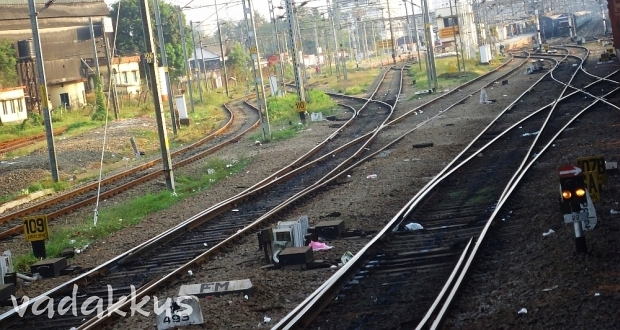
Being the lifeline of the nation and tightly integrated into its sensibilities and closely following the pulse of the nation, the state of the Indian Railways reflects the general state and mood of our country. IR started off with a bang just after independence and surged for some time riding the wave of euphoria of the initial days before it slumped around the time of the war with China. It regained some momentum after that but then slowly started going downhill around the end of the 1960s before hitting rock-bottom during the mid and later 1970s following political and economic uncertainties. The “Socialist Noon” ranging from the early 197os to the mid 1980s when India was stuck with abysmal growth levels were the “Dark Ages” for IR as well which were lost years along with the rest of the country. Expansion, development and new initiatives dried out and progress was all but absent. The graph started rising slowly after 1985 thanks to computerization and introduction of new locomotives and picked up real speed after the liberalization of 1991. Indian Railways hit its best time ever during the first decade of the new Millennium but crashed back to misery soon after 2008-09 along with the rest of the country thanks to politics and misgovernance.

1947 – 1959
IR History started in 1948 with acute shortage of hardware and the partition and much of the first decade was spent in trying to bring the mess together. Definite plans were put down to modernize the railways with better rolling stock, locomotives and other systems. In 1949 the Chittaranjan Locomotive Works was founded to produce steam locomotives and an agreement was signed with Swiss Car and Elevator Co. of Schlieren-Zurich, Switzerland, for all-steel coaches (the design is still in use today) which would be the best in the World at that time in design and technology. This lead to the establishment of the Integral Coach Factory (ICF) in Perambur, Madras in 1953. Initially the decision was to invest in stream traction and to overcome loco shortage around 1000 WP locos (Vulcan Foundry), Diesel locomotives for all gauges (YDM-1, ZDM-1, NDM-1) and EMU units were imported from UK and Italy between 1948 and 1956 and several all-second class Janata Expresses were started, five of which survive today, one in its original form (Howrah – Rajgir Janata Exp). But establishment of standards were not fast enough. Spurred by the Ariyalur disaster, the Railways started modernization programs at breakneck speed and many decisions that would shape the Railways in the future like the adoption of 25kV AC traction for electrification and Zonal grouping of the Railways were made during this time. Hundreds of kilometers of new line were laid and around 2000 km of line was electrified in 5 years as the decision was taken to switch to electric traction aggressively. New BG locomotives (WCM-1 and 2, WDM-1 imported from ALCO, USA, and WAM-1) were acquired, but almost all traction was on steam.
Photo Courtesy: Trains-Worldexpresses.com
1960 – 1969
The early 1960s were probably the best times the Indian Railways had seen before 2000, when the network was spanking modern with state-of-the-art locomotives, (comparatively) fast trains, new world-class rolling stock and good service. Electrification was progressing at a rapid pace, DLW was founded and started producing MG diesels, TELCO was producing Shunters, ICF was running on full steam and would produce EMUs and MG coaches in addition to BG coaches, Golden Rock Workshops started producing Wagons and CLW started producing electric locos (including WAG-1s) and diesel shunters, while production of steam declined. The initial orders of “India’s Diesel Workhorse” WDM-2 were delivered by ALCO in 1962 and by the end of the decade DLW was mass-producing them. The railways had decided to do away with steam altogether by then in favor of electric and diesel. Vestibuling of long distance trains, introduction of electric color-light signals and Long-Welded Rails were all introduced during this time. Tests were conducted for trains to run upto 160 kph in 1963! and many trains were dieselized. But most of these developments happened before 1965. In the aftermath of the Indo-China war the mood of the nation became somber and socialist-nationalization caught hold, squeezing the Railways out of its ambitious expansion and modernization plans. Still, several long-distance Air-Conditioned trains and “Super Expresses” were introduced along with several different types of classes and accommodation configurations. All those experiments culminated in the introduction of the first Rajdhani Express which ran on March 3, 1969 between Howrah and New Delhi. By this time, around 3500 route kilometers were electrified. This decade was also the one where the Indian Railways added the most new track since independence, with around 3500 km of new track being laid.
1970 – 1979
The 1960s were a time of great progress for IR in terms of new locomotives, electrification and upgradation of speed. But that momentum of technological advancement could not be maintained for long and the railways started languishing in the dark ages. From the early 1970s till the late 1980s except for a brief period from 1977-78 to 1981, there was no advancement whatsoever for the railways as various governments were stuck in socialist quagmires and the economy of the country stagnated. Between the WCAM-1 of 1975 and the WAG-5 of 1988, there were no new major non-Shunter locos rolled out in this period except the WAP-1 of 1980. The only major decision that were taken during this period was the formation of CORE to aggressively electrify all feasible routes in India. The WCAM-1 (Dual AC and DC current locos) were one of the greatest achievements of this era and steam production stopped with the last steam engine rolling out of CLW in 1975. They continued trying to bring about “equality among classes” by making classless trains like the New Delhi – Ernakulam/Mangalore Jayanti Janata Express, Gitanjali Express, Himgiri Express etc, all of which failed. But the highlight of the late 1970s was IR’s continued experiments with accommodation classes. Second (old Inter) Class was abolished and Third Class was renamed Second Class. Many unconventional formats like sleeper-cum-sitting, AC/non-AC composite, First Class/Second Sitting composites etc were tried out but later abandoned. AC 2-Tier coaches however, became widespread. By the end of the 1970s train structures and running methods were overhauled with colonial-era coaches being rapidly replaced by newer “Integral” ones. Madhu Dandavate, the then Railway minister was the brainchild behind much of these reforms is considered the real “modernizer” of the Indian Railways as we see it today, his greatest achievement being the “two inches of foam” he put on the wooden berths and seats of the Second Class.
1980 – 1989
The most visible development of the 1980s was the formation of CORE resulting in rampant electrification of lines across the country. Around 4500 route kilometers of track was electrified between 1980 and 1990! But Indian Railways’ most ambitious and high-tech project which would propel IR into the future was taking shape behind screens. From 1980 to 1990, IR laid the foundations of what would become one of the most complicated and biggest real-time database systems in the World: The Indian Railways Online Passenger Reservation System. It started as standalone computer reservation system in 1985 for some trains at Delhi, then at Madras, Bombay, Calcutta and Secunderabad. However, both these projects pushed though because of individual interest more than concerted efforts. The pathbreaking WAP-1 (1980) and WAG-5 (1988) locomotives were introduced in this decade and the first Shatabdi started running between New Delhi and Jhansi and was later extended to Bhopal. But nothing at all worthwhile happened from 1980 – 1985 as the country was still mired in the Hindu Rate of Growth thanks to economic stagnation. Political upheavals of the 1980s also added to it. A decade was lost for the Railways and for the country. Laying of new lines and expansion of the network would be all but absent in 1980 with a miserable 300 km of lines on an average being laid every year.
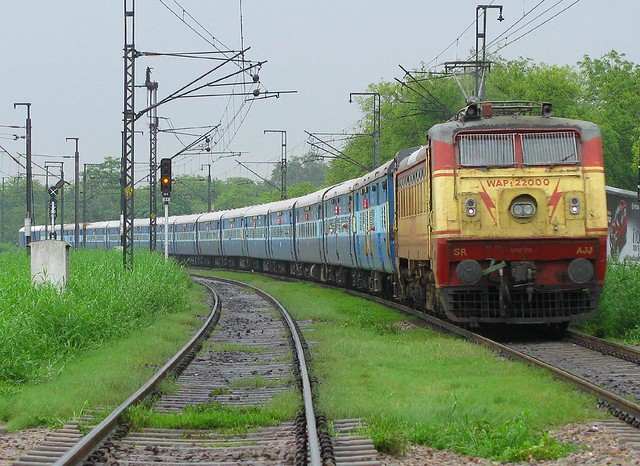
1990 – 1999
The decade of liberalization. The railways shook off its chains to launch itself on the path of modernization with standardization of train configurations, country-wide introduction of Sleeper and AC 3-tier (1994) classes in large numbers on all trains, wide upgradation to Color-Signaling replacing Semaphore, elimination of steam traction altogether, commencement of Project Unigauge with mass MG to BG conversions, the building and opening of the Konkan Railway and the launch of the completely computerized pan-India reservation system (now called CONCERT). Electrification continued unabated with 2500 km electrified per year, high-powered locomotives were introduced including the indigenous 5350 hp WAP4, the 5450 hp WAP5 and the most powerful loco in India, the 6350 hp WAG9. Many trains could be speeded up and augmented with more coaches increasing carrying capacity. But the 90s will also be remembered for being the decade when populism reared its ugly head. From sometime in the early 1990s, the Railway Budget started to be used by politicians as a tool for handing out goodies for geographies they prefer with no vision or plan for the overall, long-term development of the Railways. Blatant misuse of these populist powers have resulted in lopsided development and an unimaginative and directionless organization. The rate of accidents shot up with two of India’s biggest rail disasters – The Purushottam Express tragedy and the Gaiswal disaster both happening in this decade.
2000 – Present (2012)
One word: IRCTC. In one single shot, Indian Railways suddenly became accessible to everyone and traveling by train suddenly became an infinitesimally lesser hassle. Even if you don’t have an internet connection, you could approach any of the thousands of agents for a ticket. The IRCTC website was what liberated the Indian Railways, though it got mired in its own success and has like anything Indian, added another layer to the entire process today. Almost all of IR’s Meter and Narrow Gauge routes have been converted to Broad Gauge and most of the Railway’s trunk routes are electrified or are under the process of electrification (a major exemption being the Konkan Railway). The recent past saw the introduction of the hugely popular Garib Rath, Jan Shatabdi and Duronto Expresses and the LHB rakes. Demanding and educated passengers have forced the railways to act in favor of passengers and the stranglehold of babudom is slowly loosening. However, politicians with their petty interests are running the Railways into the ground, and the disparate fare structure between passenger and freight is not doing anything good for anyone. The ultimate WAP7 and the Diesel powerhouses WDP4 and WDG4 were introduced along with LHB rakes for premium trains. Railway patronage has risen to an all-time high with hundreds of special trains being run every year and rarely a train does not go waitlisted. Still, IR is facing heavy losses and frequent accidents with run-down rolling stock and crumbling infrastructure.
The Way Forward
India and all of us owe a lot to the Railways. An immense lot. And the best way to show that gratitude would be to stop using it as a commodity to gain selfish needs and start treating it as a national heritage asset instead, one that should be treated with utmost respect. To bring in modern technology and looks and all would be just external gains, the real respect for it should come from within. It will not be an easy task to lift up our railways to World-Class standards, but it is not impossible either. Privatization of the railways is not even an option as that will essentially remove the “social” aspect of our Railways as no private company will be able to run trains at current fares. What we need is a leader. A leader with a vision to get over parochial narrow mindedness and work for the country to make the Railways a professionally managed organization. It is not impossible. Our trains should get sleeker, cleaner, faster, user-friendly and more professional, something to look up to as an identity, a symbol, rather than just big hunking, clattering masses of metal. At the same time, people should should also realize that they have a duty towards running the trains and it is their property, something that needs their love and care, and not something to be despised and beaten down. The people of this country and the railways both deserve far better and are to be treated in ways befitting them. Let us hope that one day we can say that the best railway system in the World is without doubt the Indian Railways! Long way to go.
Takli Bhansali Railway Station, Maharashtra. India’s Geographical Center (mid) Point!

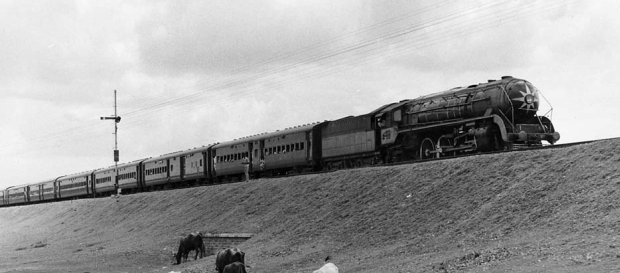

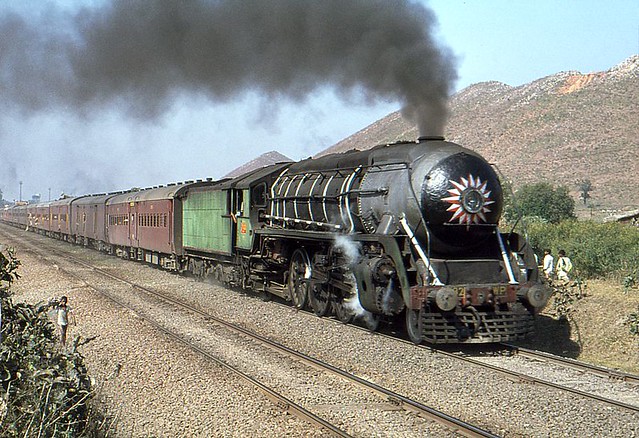


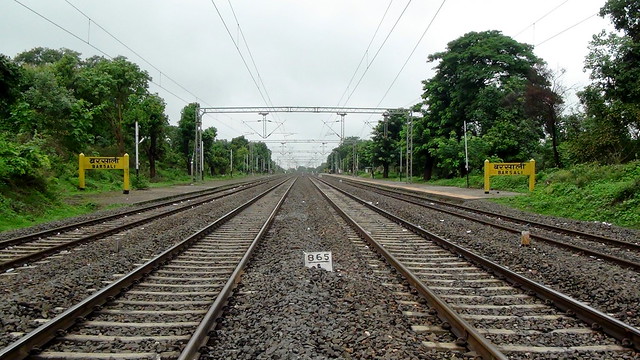
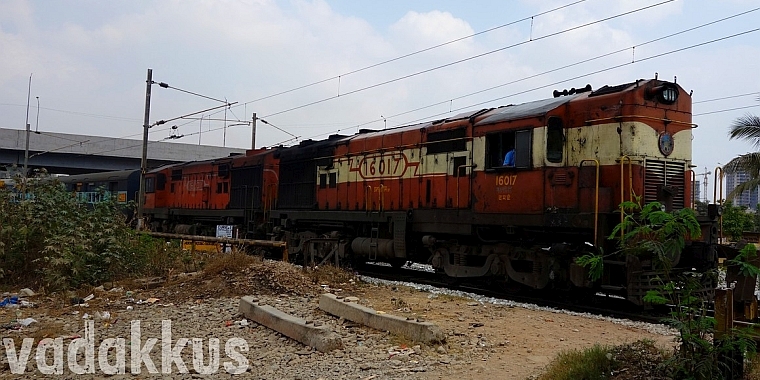

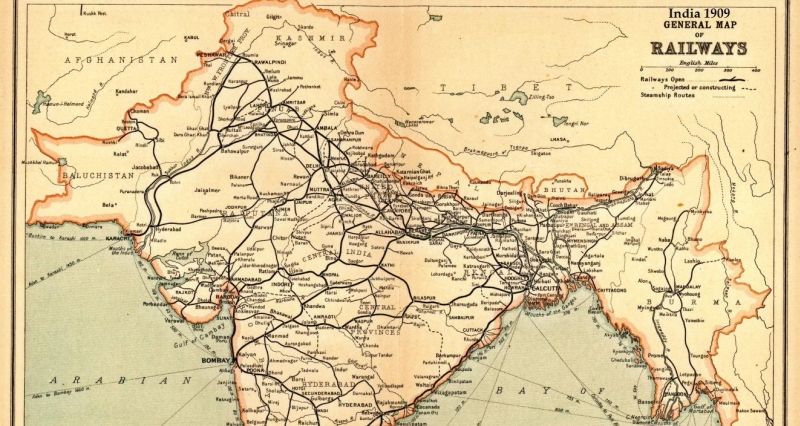
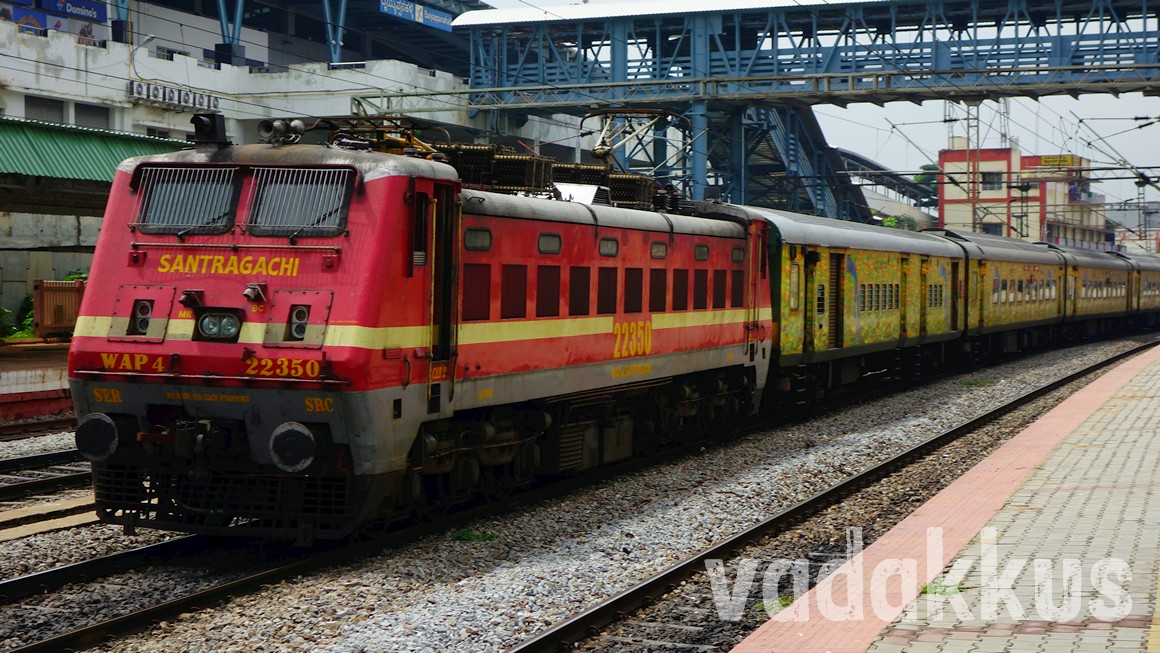
we need massive investment in railways. firstly we need to increase our network by building separate freight corridors in the busiest sections in order to free up the existing tracks. Accelerate the private investment in freight corridors with workable profit sharing formula. Identify the important economical passenger routes and strengthen the tracks for MPS 160kph and 100+kph average speed on those sections. Reduce unnecessary stoppages for trains which greatly affect their average speed. Improve the signaling systems to accommodate speed and safety. Gradually phase out the unsafe ICF bogies and replace with LHBs. Cleaning of train toilets at select stations enroute on all important trains. All these development will call for a leader who can initiate drastic viable changes
Is that the end of Indian Railways Journey.Was way to summarized in comparison to your prevoius posts.
Hoping for more on Indian Railways from you:)